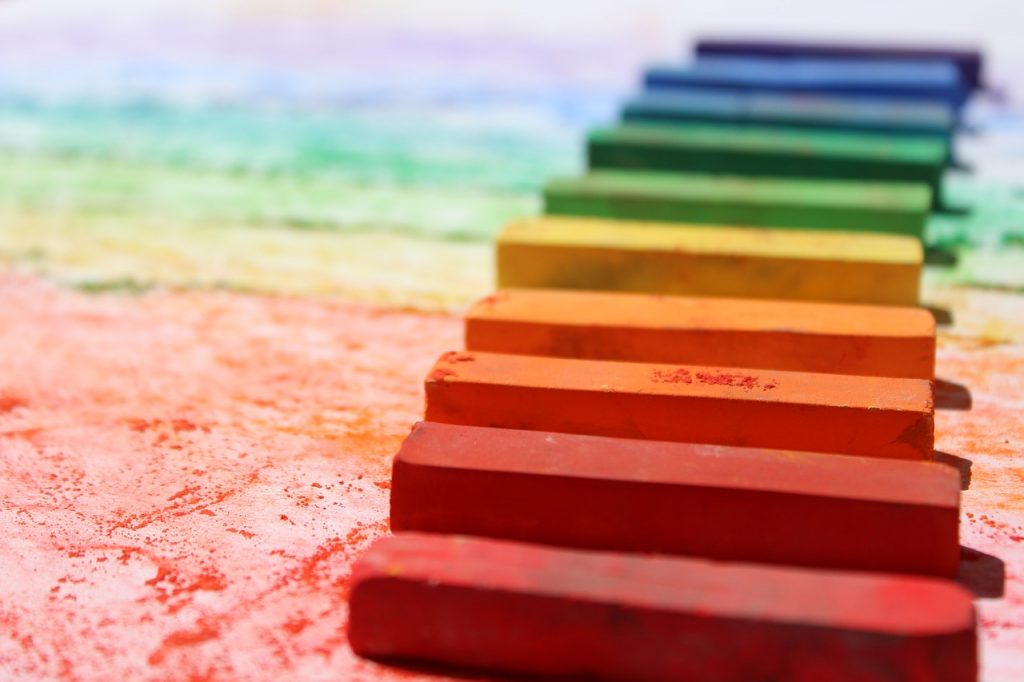Table of Contents
Color Drawing Materials
Drawing with pencils, charcoal and pens provides valuable practice and can be highly satisfying too, but with the colored drawing media, you can really experiment and produce works that are as expressive and as polished as any painting. Today’s artists are in the fortunate position of having a wide range of high-quality materials to choose from the only problem is where to start. (Color Drawing)
Colored pencils
These make a good starting point for anyone launching into color; they are easy to use, handling in the same way as the familiar graphite pencil, and you can start with a few colors and built up a more extensive collection gradually. (Color Drawing)
Like all color media, they are made from pigment held together with a binder. The quantity of binder used varies from one manufacturer to another, so you will find differences in consistency between brands. Some pencils are soft, chalky, and opaque, resembling pastels; some are slightly greasy, and others are hard and fairly transparent. You will only discover which ones you like by trying them out, which is one very good reason for starting with a small range. (Color Drawing)
Some manufacturers make water-soluble pencils as well, which are particularly useful because you can use them both wet and dry, spreading the color in some parts of a drawing and using lines in others. (Color Drawing Materials)

Pastels
Pastels are made in soft and hard versions, with the former, sold in the form of cylindrical sticks, being favored by “pastel painters”. These are almost pure pigment, bound with a tiny amount of gum, and are consequently very crumbly. Hard pastels, made with a higher proportion of binder, come in square-sectioned sticks. They produce much crisper, clearer lines and do not smudge as easily. Pastel pencils are also good for linear effects they are somewhere in between hard and soft pastels in their consistency. Spray fixative is necessary for any drawings in pastel.
Oil pastels have the great advantage of not requiring fixative, as the pigment is bound with waxes and oils. The variation inconsistency from range to the range is enormous, with some pastels being quite hard and others almost melting in your hand, but there are two basic categories: wax-oil pastels and non-wax ones, simply called oil pastels. The former have their devotees, but in general, they are less malleable than standard oil pastels, which are a versatile and fluent drawing medium. (Color Drawing Materials)

Inks and markers
Colored drawing inks, like black inks, can be divided into two broad types: waterproof and water-soluble. They are
made in a wide range of brilliant colors and can be mixed together to increase the range further. Some waterproof inks are bound with shellac, which means they can’t be mixed successfully with water-based inks, but others are acrylic-based they are known as liquid acrylics and they behave in use very much like water-soluble inks, except that they are impermeable when dry.
If you want your work to last, guard against the type of ink called “brilliant watercolor”; this is made not from pigment but from dyes, which can fade and discolor. The colors are temptingly vivid, but they are made for graphic reproduction work, where the discoloration of the original may not matter.
Some colored felt-tipped pens are also prone to fading and should be checked carefully before buying. These pens are made either with broad wedge-shaped tips (these are sometimes called markers) or with fine tips, and the ink used in them can be water- or spirit-based. They are ideal for those who like a bold approach to drawing. (Color Drawing Materials)

Papers
For colored-pencil and oil-pastel work, and ink drawing, good-quality cartridge (drawing) paper can be used, though some artists who specialize in colored pencils or oil pastel-like use a rougher texture and sometimes a pre-colored paper. For chalk pastel work, smooth paper is not usually suitable, as the pigment tends to fall off, so it is best to use either one of the papers made especially for pastel work Ingres or Mi-Teintes paper – or watercolor paper. If you like the texture of the latter but prefer to work on colored paper, you can tint it with a light wash of watercolor first. (Color Drawing)
Drawing – Taking A Line For A Walk
This post contains the content of book Art School How to Paint Draw_ Drawing, Watercolor, Oil Acrylic, Pastel
